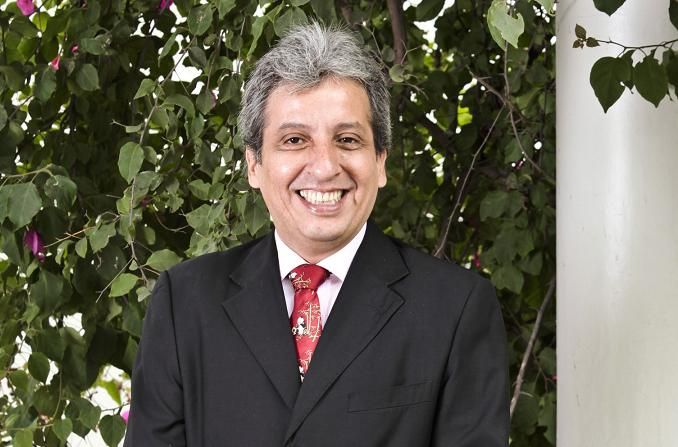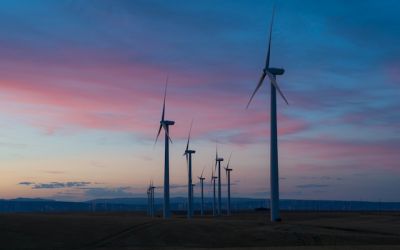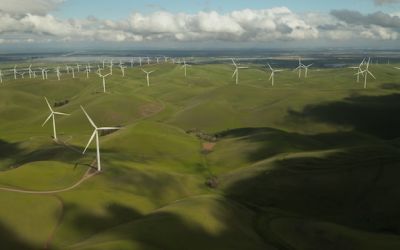Peru: a transformative global agenda
For the last 20 years, Peru’s economy has grown at an average yearly rate of 5.4 per cent. At the same time, poverty and extreme poverty rates have dropped dramatically, by 35 and 12 per cent respectively. These extraordinary figures explain why Peru is considered a model country and one of the success stories in Latin America.

Now, to maintain this growth, Peru needs to align its internal economic interests and processes with global tendencies, which are increasingly leading down the path of a green economy and sustainable development.
Pursuing a sustainable development path implies the introduction of clean technologies and more efficient productive and industrial processes, while taking into account the country’s own natural resource endowments.
It also means, in the short term, that we must align our economic, social and environmental agendas with the upcoming sustainable development goals in the post-2015 world.
By pursuing this clear and conscientious economic growth path, Peru will remain an international model albeit, this time, an international sustainable development model.
Leading the change
It is no coincidence that Peru took on the Presidency of 20th session of the Conference of the Parties (COP20). We have a clear and present interest in adopting a sustainable development model that mitigates emissions and increases resilience and adaptation, not only because 95 per cent of all natural-disaster-related deaths occur in developing countries but, particularly in our case, because Peru is the third most vulnerable county to climate change worldwide.
Floods, droughts, landslides and other natural disasters – triggered by seasonal variations and by El Niño’s southern oscillation – threaten infrastructure, food safety, clean water availability and the provision of basic services. Peruvian glaciers have also experienced a rapid retreat, having lost 40 per cent of their land surface since the 1970s, impacting water availability and energy generation.
Green investment...is rapidly changing the global investment landscape, fostering innovation in new markets and critical industries such as energy, and spurring a high level of economic dynamism
Short- and long-term welfare and growth are intrinsically linked to the adoption of climate friendly and sustainable policies. Peru is facing this challenge head on, assuming a lead role by taking on the Presidency of COP20, but also by assuming the Co-Presidency of the Green Climate Fund, cornerstone of the new global financial architecture.
Green investment, mostly focused on energy and city infrastructure, is rapidly changing the global investment landscape, fostering innovation in new markets and critical industries such as energy, and spurring a high level of economic dynamism. The effect is to create highly productive jobs, while at the same time stemming or reducing emissions.
For developing countries, and especially for rural areas not currently connected to national energy grids, renewable energy projects increasingly represent a competitive and low-emission solution to providing basic services to the most vulnerable population. In addition to launching solar plant projects to produce 235MW, Peru has a plan to install half a million solar panels to families in the rural Andes and Amazon, thus improving the lives of our most vulnerable population and setting up the framework for a low emissions future.
Working for tangible progress
COP20 represents not only Peru’s vision for a sustainable future, but it encapsulates thewhole Latin American region’s commitment to development, growth, environmental stewardship and inclusion.
In order to successfully fulfil the Presidency role, Peru is seeking clear advances in the negotiations, to get as a result a draft of the new climate agreement to be signed in 2015. We will pursue:
- The recognition and systematisation of good practices worldwide on mitigation in order to consolidate successful measures
- The establishment of a worldwide agenda for adaptation to the consequences of climate change
- The promotion of green financing for climate change, capitalising and mobilising funds from the Green Climate Fund
- The strengthening of preparations for the Intended Nationally Determined Contributions process, and
- The consolidation of advances made so far in protecting the world’s forests (including REDD+).
Major policy advances
COP20 represents an opportunity to consolidate and bring to the forefront advances made in our internal climate agenda. For example, since deforestation and land-use change are the leading source of emissions of greenhouse gases in Peru, and in many developing nations, one of the key schemes in place to promote mitigation is the national forest investment programme, which is designed to protect 54 million hectares of forested lands.
This plan works with indigenous peoples and small farmers to stem the ultimate social and economic drivers of deforestation and achieve the right balance between sustainable management and protection. Peru is signing agreements worth hundreds of millions of dollars with developed nations, such as Norway, through a Forest Investment Program that will provide the funds to implement the national forest protection agenda.
Peru is signing agreements worth hundreds of millions of dollars with developed nations, such as Norway, through a Forest Investment Program that will provide the funds to implement the national forest protection agenda
Peru is also making major strides in consolidating and finalising a National Climate Change Strategy, a Biological Diversity Strategy, a Strategy against Desertification and Drought, and the National Strategic Plan on Forests and Climate Change, which will coordinate many initiatives already under way. Peru is also advancing rapidly with its Intended Nationally Determined Contributions and a Green Growth Strategy, establishing precise targets for mitigation and clear policies for adaptation, both underpinned by PlanCC, a major study of current opportunities for mitigation across critical industrial sectors.
The world moves forward
Governments, civil society and the private sector must all come together to articulate their positions and contribute resolutely to the global decision-making process that is essential to tackling head-on the causes and consequences of climate change. A sustainable future, but even more urgently, our Pre-2020 ambition, requires dynamism and concrete actions, and this is precisely where the private sector plays a key role.
Lima seeks to be recognised as providing the opening for other sectors to be included in the debate, and for their voices to be heard. In order to coordinate this work and take concrete steps to achieve the Pre-2020 ambition, Peru intends to launch a transformative programme for action, an innovative coordination effort designed to make strides on these and other issues discussed in the Workstream 2 of the Durban Platform for Enhanced Action.
The Innovation Forum is one of the crucial spaces in which governments’ climate ambitions can be matched with the private sector’s aspirations, in order to design workable solutions to mitigation and adaptation. Such coordination is essential to prevent us from surpassing the 2°C threshold.







_-_frame_at_0m5s_400_250_80_s_c1.jpg)
